This document discusses fundamentals of programming including iteration, while loops, for loops, and common loop patterns. It provides examples of using while loops to iterate until a condition is met, using break and continue statements to control loop execution, and using for loops to iterate over lists. It also demonstrates common loop patterns such as counting items, summing values, and finding the maximum/minimum value.

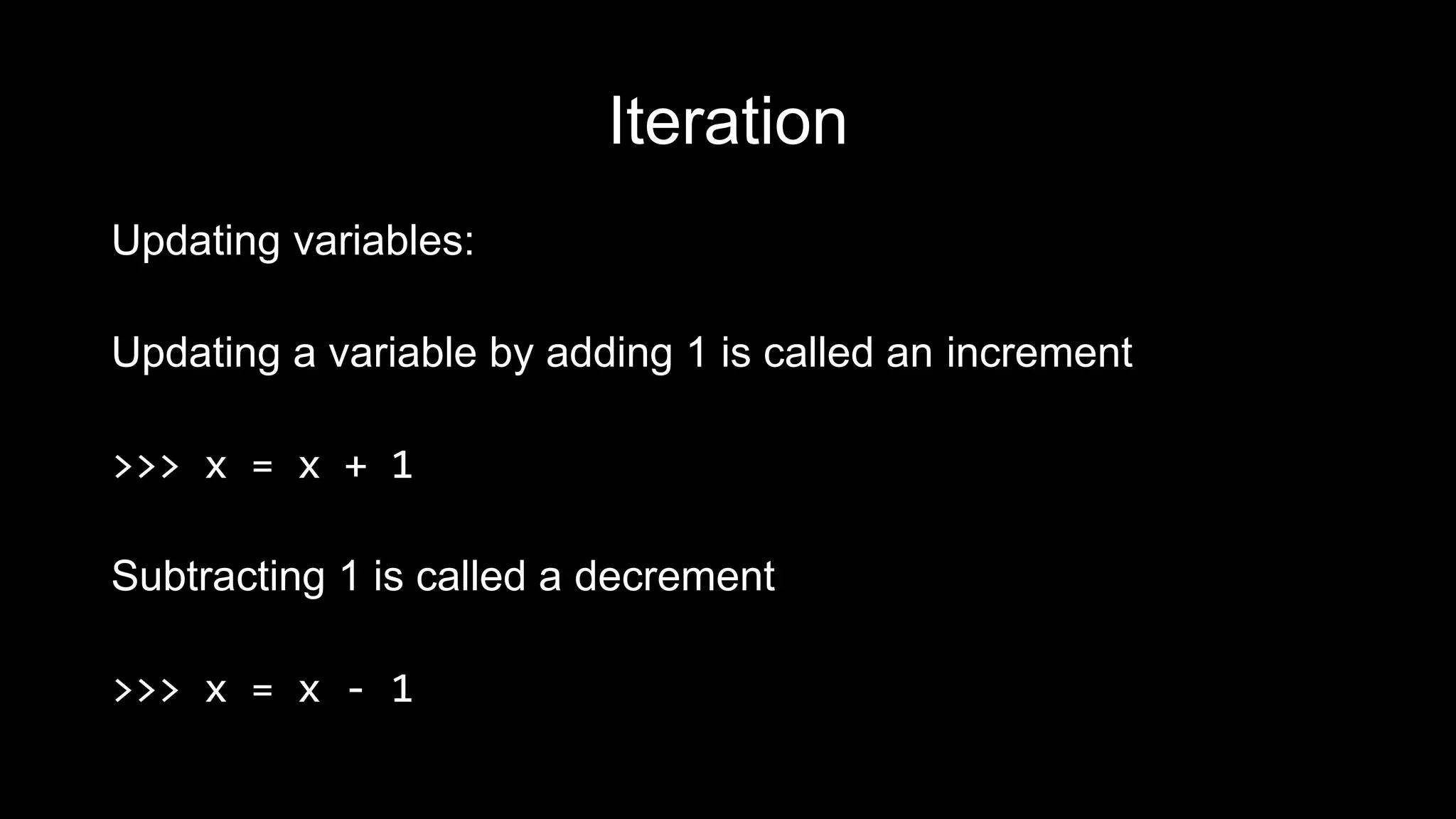
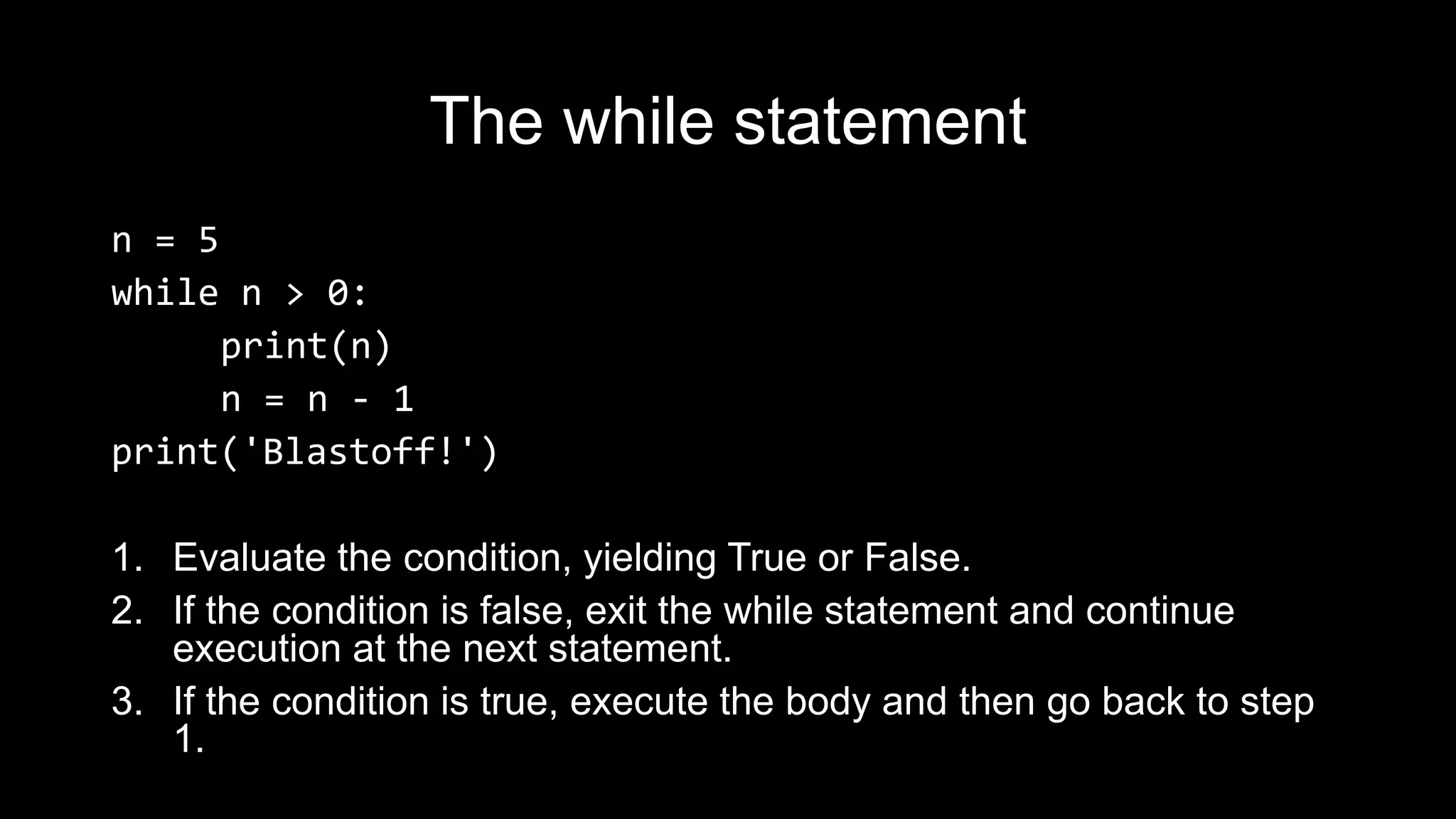
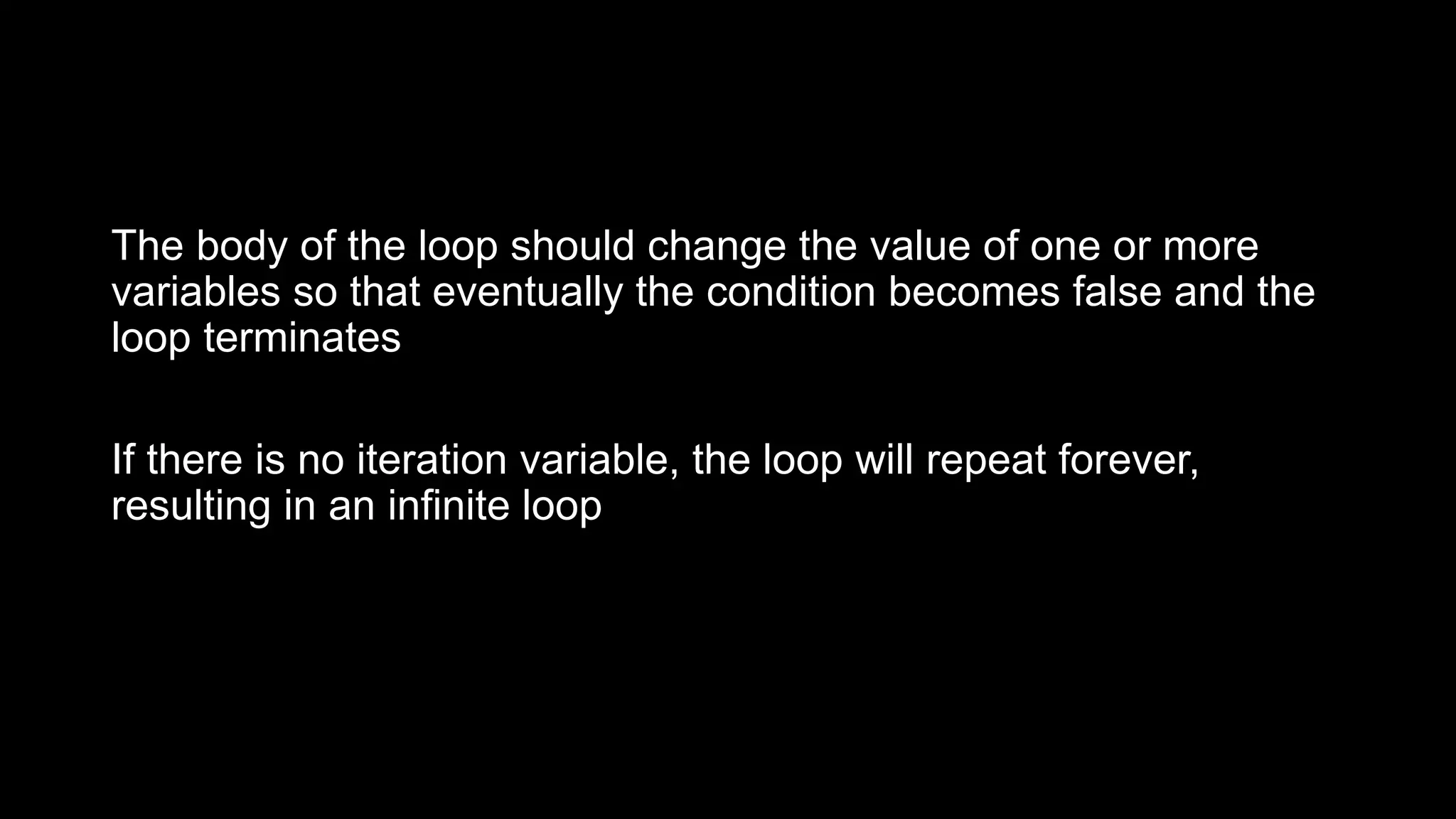
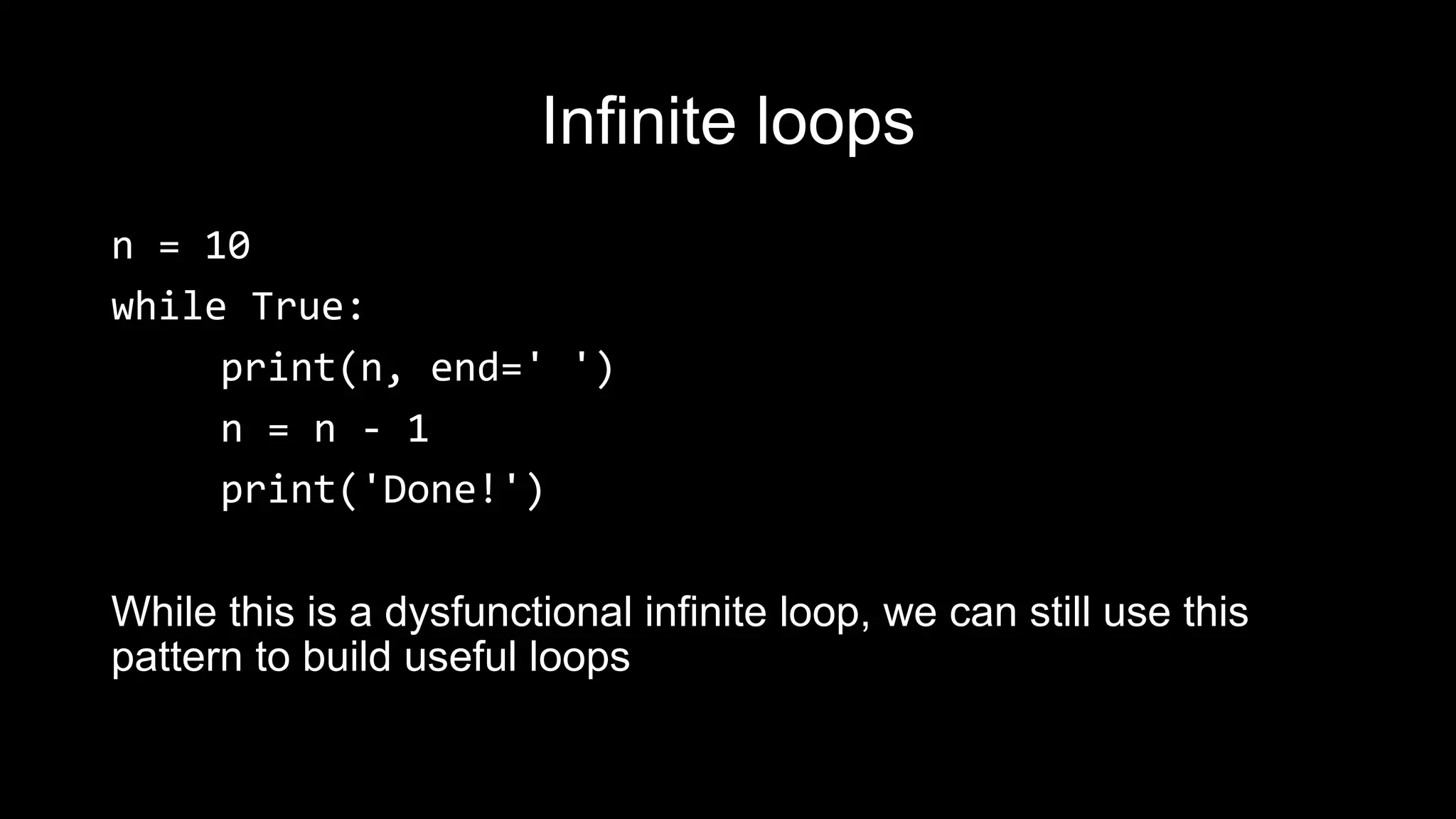

![Continue Statement while True: line = input('> ') if line[0] == '#': continue if line == 'done': break print(line) print('Done!')](https://image.slidesharecdn.com/lecture5-201017191031/75/Python-Lecture-5-7-2048.jpg)
![For Loops Sometimes we want to loop through a set of things such as a list of words, the lines in a file, or a list of numbers departments = ['BS', 'GIS', 'KIU'] for department in departments: print('Department Name:', department) print('Done!')](https://image.slidesharecdn.com/lecture5-201017191031/75/Python-Lecture-5-8-2048.jpg)
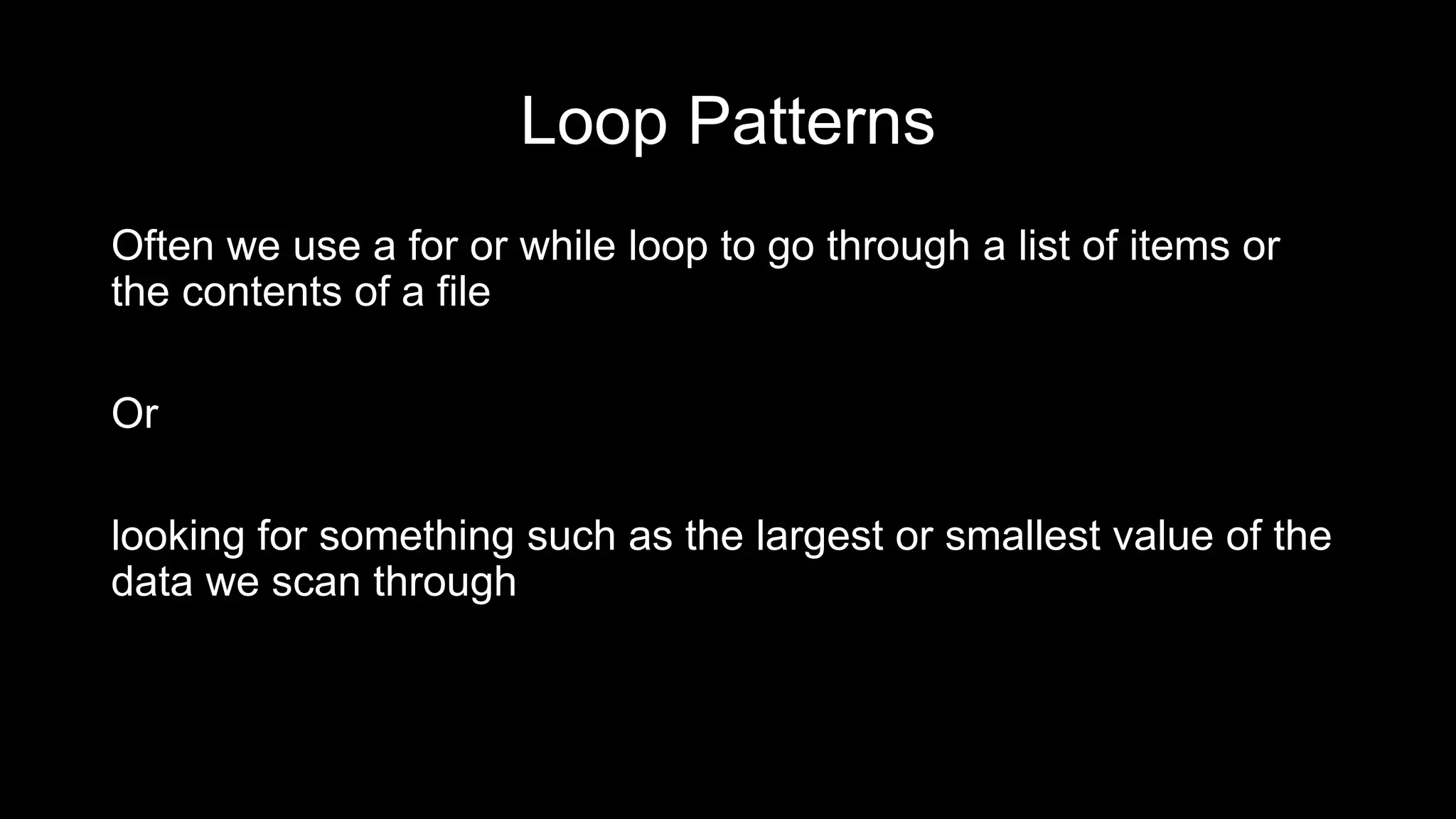
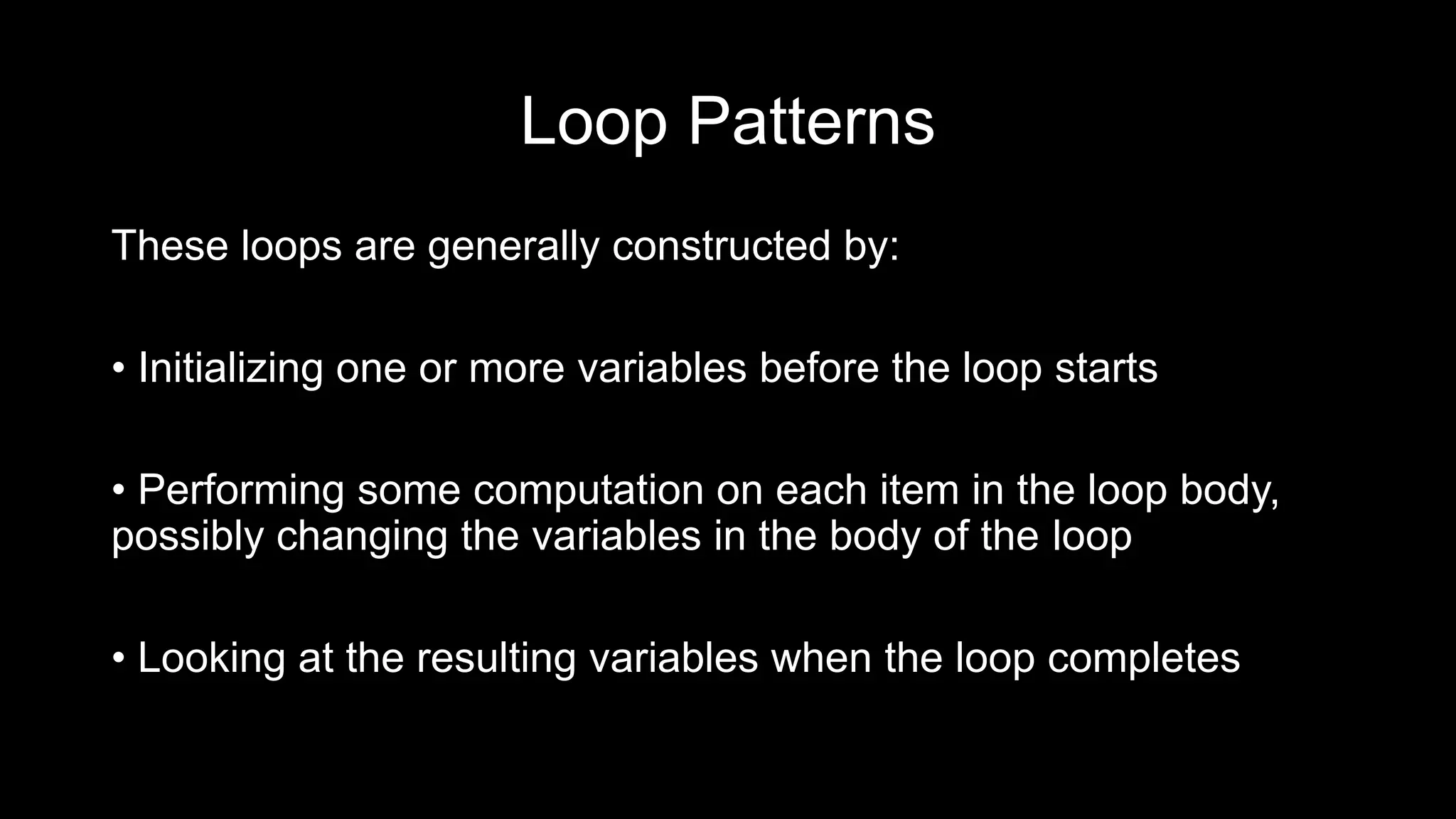
![Counting Items count = 0 for itervar in [3, 41, 12, 9, 74, 15]: count = count + 1 print('Count: ', count)](https://image.slidesharecdn.com/lecture5-201017191031/75/Python-Lecture-5-11-2048.jpg)
![Counting and summing loops total = 0 for itervar in [3, 41, 12, 9, 74, 15]: total = total + itervar print('Total: ', total)](https://image.slidesharecdn.com/lecture5-201017191031/75/Python-Lecture-5-12-2048.jpg)
![Maximum and Minimum largest = None print('Before:', largest) for itervar in [3, 41, 12, 9, 74, 15]: if largest is None or itervar > largest : largest = itervar print('Loop:', itervar, largest) print('Largest:', largest)](https://image.slidesharecdn.com/lecture5-201017191031/75/Python-Lecture-5-13-2048.jpg)
![Maximum and Minimum smallest = None print('Before:', smallest) for itervar in [3, 41, 12, 9, 74, 15]: if smallest is None or itervar < smallest: smallest = itervar print('Loop:', itervar, smallest) print('Smallest:', smallest)](https://image.slidesharecdn.com/lecture5-201017191031/75/Python-Lecture-5-14-2048.jpg)